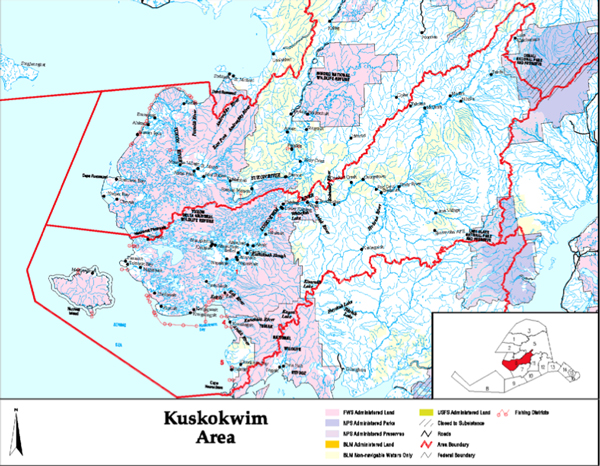
The Federal Subsistence Board Thursday unanimously approved a special action request from the Napaskiak Traditional Council that would limit any available king salmon to federally qualified subsistence users of 32 specific Kuskokwim communities.
In the discussion about limiting the pool of eligible fisherman, the board heard passionate testimony about the need for chinook harvest.
“Through blood, sweat, and tears we feed our families,” said George Guy of Kwethuluk.
They also heard calls for strong conservation measures. Lisa Feyereisen is from Chuathbaluk.
“I want to be able to show my grandchildren what a Chinook salmon looks like,” said Feyereisen.
The action passed by the board doesn’t specifically open up any harvest of kings nor does it shut down fisheries that could incidentally catch kings. All it does it say who will be at the table if the runs comes in stronger than expected.
Between 71,000 and 117,000 kings are expected in the river this year. If the run is on the smaller side, there could be little to no surplus.
Gene Peltola Junior is the Assistant Regional Director for the Office of Subsistence Management.
“The forecast right now is for a very small harvestable surplus. If there is not an opportunity for a harvestable surplus, all of this is a moot point. But if the run progresses such that there is deemed to be a harvestable surplus available you have to have this in place in attempt to allocate or provide fish,” said Peltola Junior.
In that scenario, the initial pool contains residents of 32 villages, running from Chefornak up to McGrath, including Bethel. The list excludes communities in South Kuskokwim Bay and Nelson Island including Quinhagak, Platinum, Goodnews Bay, Nightmute, Newtok, Tununuk and Tooksook Bay, plus Mekoryuk on Nunivak Island.
The 14,000 people in the 32 communities still have incredible fishing power. David Jenkins is with the Office of Subsistence Management.
“We still have the problem under that situation of a projected too few fish and lots of users who would access to those fish,” said Jenkins.
Managers would need to further restrict among those users. The board indicated they wanted the federal in season manager to have a range of management tools at his disposal, but they did not specify an exact allocation strategy.
There were several ideas presented by the Office of Subsistence Management for how a surplus might be handled. Managers could begin by allocating 25 chinook salmon per village. If there are more fish available, the surplus could be split among villages, excluding Bethel, proportionally based on their 20 year harvest average.
The allocation among Bethel residents could be done through a second so-called section 804 analysis, in which individuals would see opportunity based on three criteria: customary and direct dependence on the resource as a mainstay of livelihood, local residency and the availability of other resources.
But it is mid April already. The draft framework says if it were not possible to do that analysis in time, there could be a simple drawing permit for Bethel residents.
The board did not endorse any of the presented allocation schemes, but expressed a wish for the in season manager to have alternatives available.
Ben Matheson is a contributor with the Alaska Public Radio Network.




